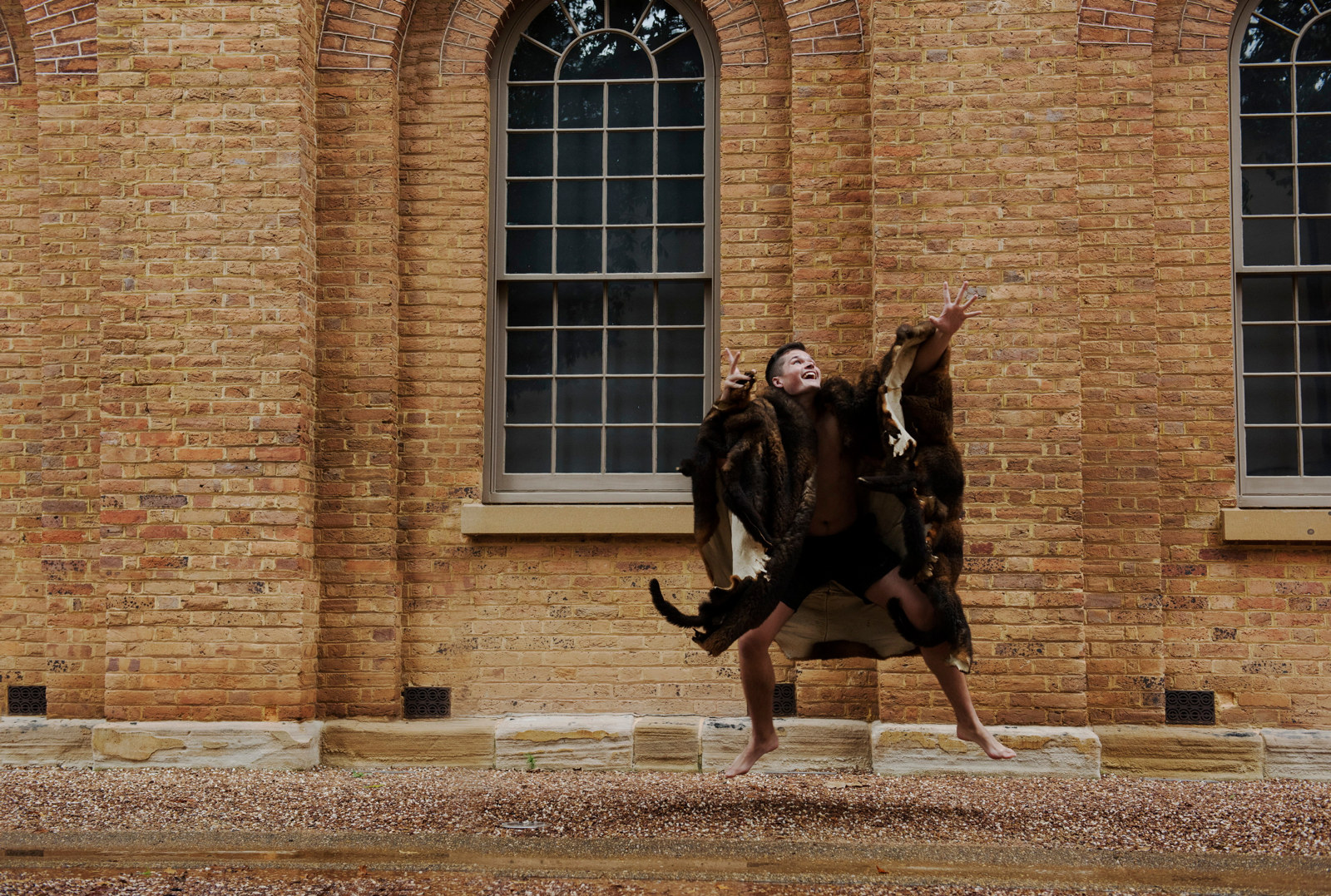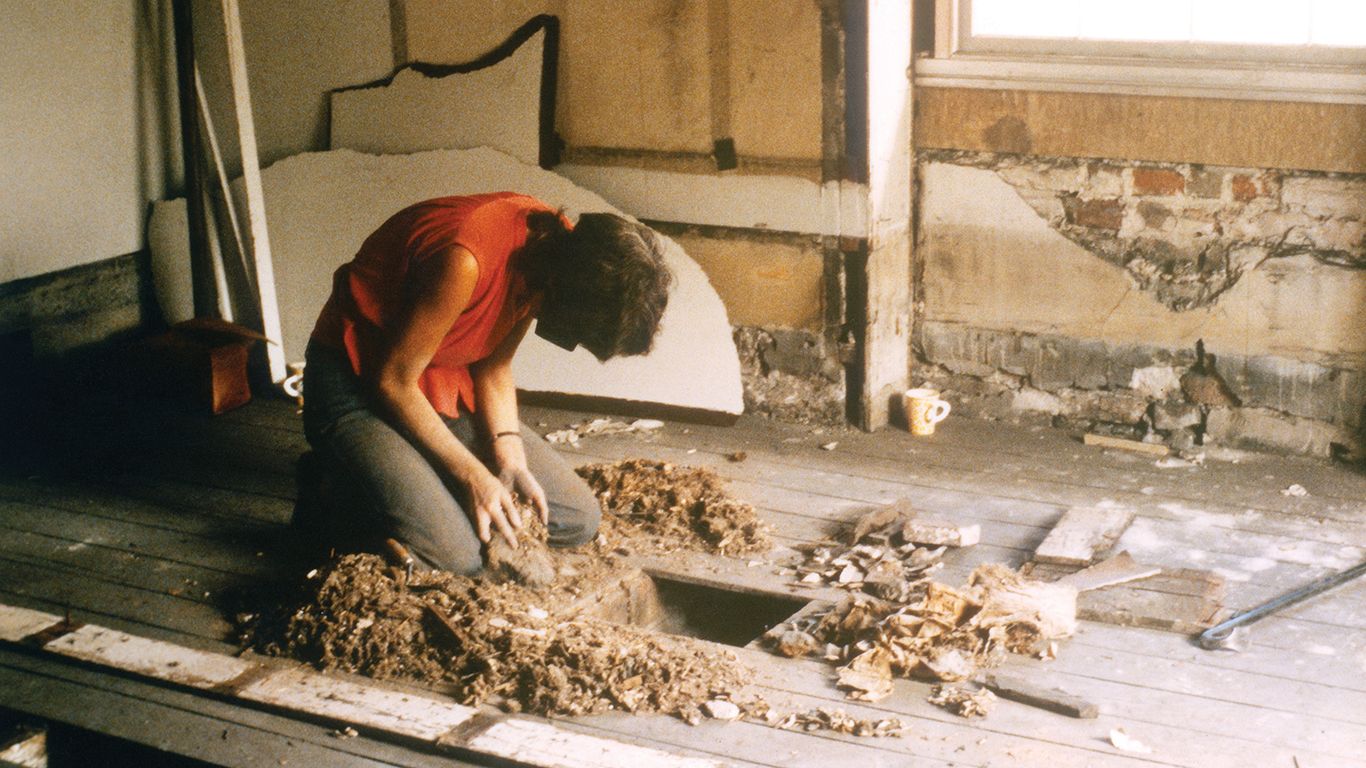The beauties we find
At the rear of the Heritage team office in the northern range of the Hyde Park Barracks there is a room that was the quarters of the District Court judge.
The room was walled with bookcases that have recently been removed in preparation for a new use. To our great delight, when we removed the bookcases we discovered several layers of early wallpaper and linoleum floorcoverings. The finishes were kindly analysed and dated by MHNSW’s very own curator Michael Lech.
The various wallpapers give us a hint to the different decorative schemes and uses of the room over a period of around 80 years. The earliest wallpaper we found includes a beautiful frieze and body/fill scheme featuring chrysanthemums on a pale blue background with gilt highlights dated to the late 1880s, similar to papers found at Rouse Hill Estate. On top of this is an early-20th-century wall and ceiling scheme in an abstract brown palette. The final layer is an embossed frieze. The embossing and the use of classical swirling motifs suggest a late 1940s or early 1950s manufacture date.
The earliest section of linoleum in the room was found under several other layers of lino, directly on the floorboards, and is an imitation of tiles using colourful geometric patterns. This was typical of the later part of the 19th century, as linoleum was very hard wearing and easy to clean and cheaper than marble and parquetry. Above this is another linoleum imitating tiles, this time in a beautiful mosaic pattern.
Another very interesting find was what seem to be two sections of the original 1819 timber roof rafters of the northern range. These were built over when the second storey was added in 1873.
Following these fascinating finds we have documented the finishes and have decided to clean and consolidate the different sections of wallpaper, leaving them exposed and incorporating them in the new colour scheme for the room for all to enjoy.
Published on
Related

Finding hope: Q&A with artist Hiromi Tango
Hope is a digital projection artwork by Japanese-Australian artist Hiromi Tango that uses the facade of the UNESCO World Heritage–listed Hyde Park Barracks as its canvas
![Government Printing Office; NRS 4481, Glass negatives. NRS-4481-4-44-[AF00194836] Immigration Barracks Sydney, August 1871 [Department of Public Works]](https://images.mhnsw.au/fotoweb/embed/2024/03/b437216ff79d433da2d3b92c8bb24e51.jpg)
Conservation
Conservation in action: Hyde Park Barracks northern range refurbishment works
In collaboration with experienced heritage consultants and traditional tradespeople, MHNSW is undertaking conservation works to the northern range buildings

Cutter and Coota: a children’s play by Bruce Pascoe
Meet author and historian Bruce Pascoe and the main characters from his play Cutter and Coota as they reflect on the play’s themes and the experience of performing at the Hyde Park Barracks

Hyde Park Barracks: a keeper of lost things
Uncover and explore some of the items found inside the barracks
